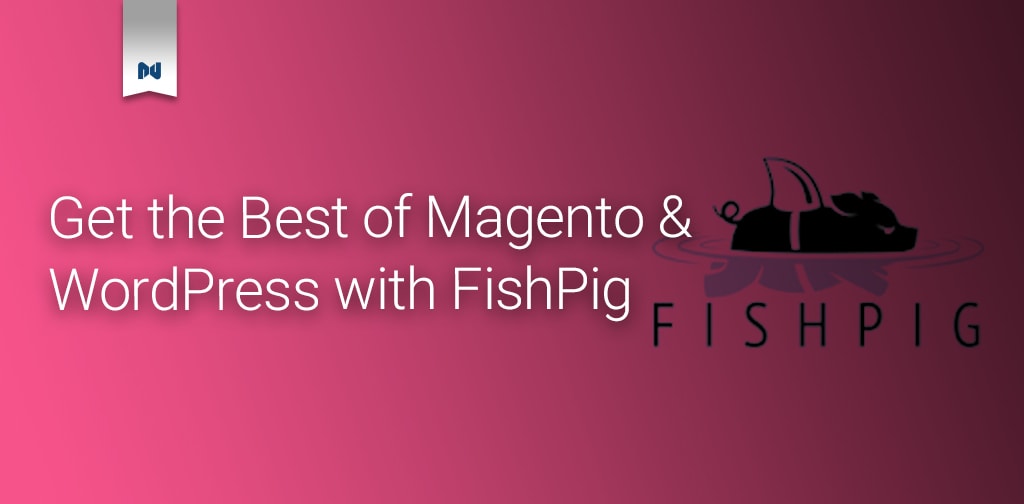If you asked any web developer which ecommerce platform has the most built in features – they’d tell you it’s Magento. And if you asked that same web developer which platform makes it easy to edit long-form blog content, they’d tell you it’s WordPress.
There’s a reason WordPress powers 40% of the top internet sites & Magento powers some of the largest and most complex online retailers.
So, it should come as no surprise that someone wanted to combine these platforms and take the best parts from each.
Full Control Over Content
Last year, our partner agency Bytes.co started a new ecommerce project for their client Swan Island Dahlias. The client wanted to have full control over content. They wanted to add content to the blog and they also wanted to edit standalone pages like the About Us page.
This is possible within the Magento content management solution and one of Bytes’ developers could easily add all of the content for the client. But it isn’t fool-proof, and a non-tech savvy user could break a page. That’s where WordPress comes in.
The still very new Gutenberg block editor in WordPress makes it easy for anyone to add or edit content on pages & blog posts.
Single Domain > Multiple Subdomains
If you’ve ever tried to use multiple applications for your business, the age old wisdom was to use subdomains:
- Blog.yourwebsite.com – this would run WordPress and handle all of the content marketing for your store
- Store.yourwebsite.com – this would run Magento
Having multiple subdomains is certainly a solution. It lets you run multiple applications for a single business. But it isn’t perfect. For one – the client wants to control all of the content. And while WordPress contains the blog for content marketing, the About Us page and other critical pages will still be in the Magento editor.
**Image of a simplified Dahlias sitemap and show which pages are controlled by WP or Magento**
Secondly, as soon as you add multiple subdomains you have to worry about two new problems:
- Analytics – making sure you know who is purchasing and why
- Search Engine Optimization (SEO) – making sure Google ranks your website highly and shows users the right page for their search
Analytics
I’m a huge data snob. I’d rather collect twice as much information as I’ll ever need than miss out on important data. And one of the most important aspects of analytics is knowing where users are coming from & what pieces of content are driving conversions.
Both these metrics become more challenging to uncover when you use multiple subdomains that are tracked using different Google Analytics implementations.
SEO
If someone searches for “dahlias” should Google send them to the blog or the store? When you bifurcate your website, you make search engines like Google decide which they recommend as the top link.
**show image of the shop page of Dahlias compared to a blog post side by side**
Both pages offer very different options for users and while for Google it may be a toss-up which subdomain they give the top spot – it’s really important for your bottom line. One page might have a 0.5% conversion rate and the other a 1% conversion rate.
And while there are solutions & linking strategies, when you have a single site that can tell Google which pages should have preference, you’ll have a lot more control.
Between these two new problems, many store owners don’t think it’s worth the hassle of combining different platforms and they’d rather use a single platform with whatever weaknesses they have.
WordPress & Magento Meet Peanut Butter & Chocolate
Luckily both of these platforms are open-source and open-source projects have lots of unique & specialist features that closed-source projects just don’t have because they’re locked down.
Ben Tideswall created a piece of technology called FishPig that combines WordPress & Magento to work on a single domain.
That means that WordPress could control the home page, the blog, and any stand-alone pages like the About Us page. Magento controls the shop page, product pages, and the checkout flow. And both of these coexist on https://www.dahlias.com/.
I built the module to allow seamless integration of Magento and WordPress. To customers and search engines it should look and feel like one application. It’s great to see Netalico/Nexcess taking advantage of this and building a great site.
-Ben Tideswall, creator of FishPig module
What Functionality Should Each App Control
FishPig gives developers a lot of control into what you want each app to do. Our partner Bytes used the following on their client site:
- The core module let’s you combine WordPress & Magento
- The Root module let’s you use WordPress on the home page for your site
- The Shortcodes & Widgets module lets you use regular WordPress shortcodes as well as provides a new shortcode to show products from your Magento store in any WordPress page or post
- The Yoast SEO module lets you control your sites SEO with the Yoast plugin instead of through magento
In addition to the above there’s plenty of other features you can use on your site:
- Single Sign-on – synchronizes your customers & users between both applications
- Related products – lets you add recommended content or products to either WordPress or Magento
- Integrated search – when someone searches your site they’ll receive a combination of WordPress posts & Magento products in their search results
- And many more
FishPig provides web developers a plethora of options & choices. You can choose which application controls what and under what circumstances. And since your analytics & SEO weren’t distorted by having separate subdomains it’s going to be much easier for the client to create & manage content, see the results of their marketing, and adjust course. Ultimately making them more nimble & profitable.

